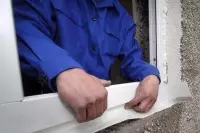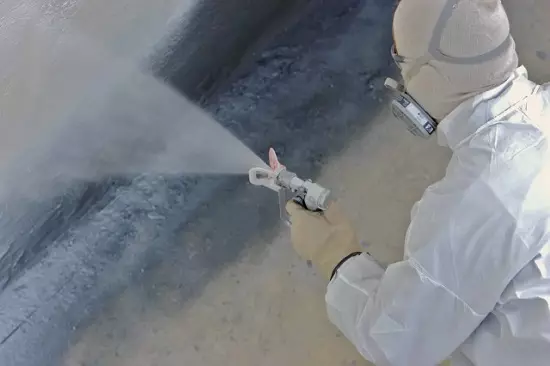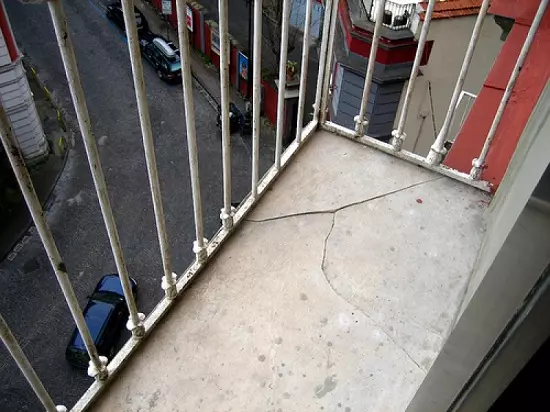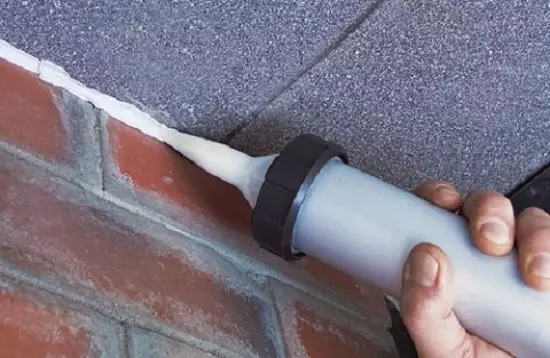
Waterproofing is needed, both glazed and open balconies and loggiam. For the open most often, it is relevant as protection against the blur and destruction of the floor surface as a result of falling onto the precipitation balcony, and closed is needed as an obstacle to penetrate water from neighbors through the overlap top plate.
Sometimes to get rid of leaks, on the balcony or loggia you need to make waterproofing and ceiling, and gender. The material below will help you cope with this task. We will tell you what to do if the loggia flows, how to carry out the waterproofing of the balcony with their own hands, how to eliminate leaks and about other useful things.
Materials for waterproofing
The choice of material and method of waterproofing the balcony or loggia primarily depends on the availability of skills and skills of the artist's work. The easiest, but also more expensive method of waterproofing balcony From the inside it is painted, or tailoring waterproofing. It consists in applying on the surface of the loggia or balcony of compositions with water-repellent properties. Mastics for painting waterproofing are coating or penetrating.
Refractory mastic is used to waterproofing brick, stone or polyuritan bases of loggias or balconies. Apply such liquids as a painting tool and by sprayer. The coating compositions are polymer-cement, bitumen and rubber and bitumen rubber.

Spraying of bitumen-rubber mastic when waterproofing loggia
Penetrating mastic is used for waterproofing balconies and loggias with concrete base. They are usually produced in the form of dry mixtures and are bred by water. Such mixtures consist of cement, quartz sand and special chemical additives.
Second option How to make a waterproofing of a balcony or loggia involves the use of rolled materials - inlet or rolled waterproofing. The technology of their use is more complex and implies the surfacing of the material to the surface or the base of the base. The formation is usually made using a gas burner. To do this, polymer-bitumen rolled materials are used, such as rubberoid, biccroplast, philipol, earbite, hydrokhotloizol, hydroisol and armobitel.
Article on the topic: High-quality water warm floor with your own hands under the laminate
Balconies and loggias are covered with materials produced based on polyethylene, polypropylene, polyvinyl chloride, hydrobutyl or synthetic rubber. A good example of inlet waterproofing is a foomolyon. It is often released on self-adhesive basis. In addition to excellent waterproofing properties, it is used not only as a heater, but also as vapor insulation of the balcony when insulation, as it is covered with a foil from two sides.
Waterproofing work
To carry out high-quality waterproofing of the balcony with their own hands, it is necessary to carefully clean the insulated surface. If it is the floor, then its old coating is dismantled. Then the base is carefully examined for the presence of pits, cracks and weakened destructive sites. Cracks are expanded and leveled to the P-shaped, loose areas are fed by a perforator or another tool. If metal parts are mounted in the base or fittings looks out, they must be cleaned with rust and coat with an anti-corrosion agent. After that, the foundation and all of its recesses need to be cleaned of garbage and dust using a rigid brush.
Read the same: How to make the overhaul of the balcony.
In the case when the floor is concrete, it is necessary to perform its cement screed before carrying out the waterproofing of the loggia. This procedure is designed to equalize the surface of the floor of the loggia and the task of it the right angle of inclination (1-20 away from the wall of the house), in order to ensure normal drainage. For clarity, you can watch the video.
To the question of who should repair the slab overlap, if the balcony pours from the neighbors from above? Appeals to utilities will be useless if this structural element does not have explicit signs of destruction and is not an emergency, threatening life and health of tenants.

Example emergency balcony
To agree with the neighbors about the maintenance of repairs is also sometimes problematic. In this situation, it is easiest to make waterproofing a balcony or loggia from the inside on their own. Here is an example of a sequence of actions when using penetrating mastic for waterproofing the ceiling of the balcony from the inside:
- We dismantle the ceiling cover, if it is available, and clean the base from plaster, paint, glue, cement, and other things.
- Moisten the base with water using an ordinary sprayer and evenly distribute it by painting roller. The surface should be very wet.
- We apply penetrating brush mastic with artificial bristles. Waterproofing of the loggia from the inside involves mastic applies in two layers. Performing the first layer, make brush strokes in the direction across the slab of the overlap.
- We give mastic slightly grappling and abundantly moisturize the first layer of waterproofing by means of a roller and sprayer.
- We apply a second layer of mastic movements of the brush along the slab overlap. During the day we support the wet state of waterproofing, periodically spraying with it with water.
Article on the topic: Facing panels for the facade of the house: under the brick, stone, timber
It will not be further covered with waterproofing the wall of the house along the ceiling of the loggia to a height of 15-20 cm. This will additionally insulate the loggia from the penetration of undesirable moisture.
Sealing balcony and loggia
It often happens that even after glazing and the waterproofing device, water still falls on the balcony or loggia. Why does the balcony flowing? Leaks can be formed for various reasons. For example, water can penetrate with poor-quality glazing of loggias or balconies through the slots in the window frames. It also happens that flow is formed due to the gap between the glazing and the wall to which it is adjacent. The balcony can flow from above from the neighbors through the wall of the wall and the balcony or at the end of the balcony through the gap between the visor and the ceiling.
For localization of leaks, the sealing of balconies and loggias is required. If the cause of the leakage is slots in glazing, sealing is to install special seals - naschelnikov. These are self-adhesive parts for plastic glass windows that are attached from the windward side. They are produced in various variations and are widespread.

Plastic Nickname with Flexible Edge
All other leaks can be eliminated using silicone sealant. This tool is famous for its versatility and excellent sealing properties. Localization of leaks through silicone sealant is carried out in several stages:
- Before making a gap, carefully clean the surface to be sealing. Scraping the old paint, bitumen, glue using for porous bases sandpaper, and for concrete brush with wire bristle. Metal and plastic We deliver a special cleaner from the mud. Plots affected by mold and fungus, process alcohol or other disinfectant.
- We wipe the surface with a damp cloth or a sponge, thereby cleaning it from dust. It is important not to use with the detergent that do not have adhesion with a sealant. We wait for a complete drying of the surface.
- We carry out sealing of seams. Smoothing sealant must be smoothed immediately after applying using a wooden or plastic spatula wetted in a soap solution.
Article on the topic: How and how to align the wooden floor under linoleum

An example of applying sealant
Sealing cord is used to seal wide recesses in addition to silicone sealants. So, when complying with all these rules, the sealing of balconies and loggias does not represent special difficulties and is quite feasible.
